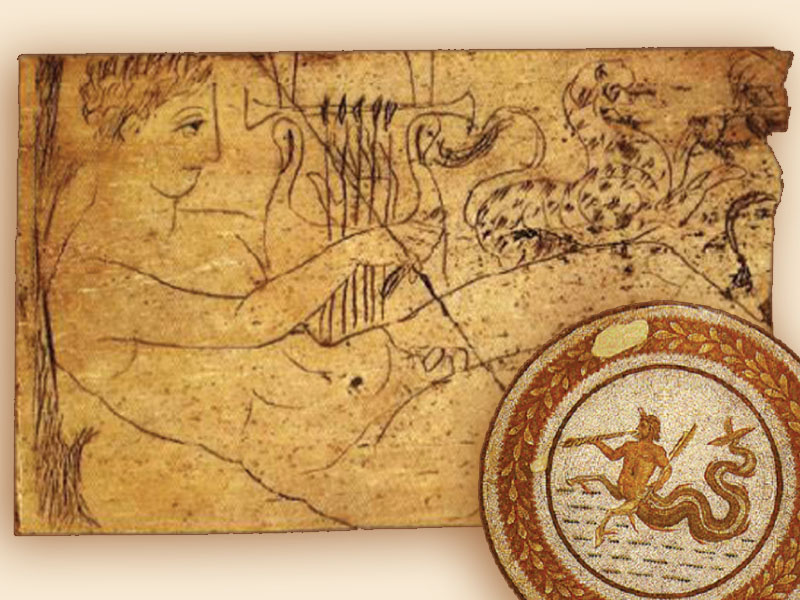Ancient folk music in Tunisia Between Cyrenaic and Rationalism: A Historical Study
Issue 45

By Dr Mohammed Al Daridi
At the beginning of this study, my first concern was documenting the ancient folk music practice during the Punic and Roman periods in Tunisia. My main concern was that I would fall into the trap of documenting the music of the higher social groups and omit – partially or completely – the music of people in different parts of the country.
If we examine the various Greek, Persian and Arabic historical documents, we discover that only ‘official’ music adopted by the ‘authority’ in all its forms – religious, ruling, etc. – was documented, while the musical practices of different social groups and their music, instruments and performances were ignored.
In order to overcome these concerns, I decided to address the music by adopting approaches that are essentially historical and cultural, but we handled this in an innovative manner based on observation, classification, extrapolation and examination of the various types of written and illustrated documents and various iconographic documents. My approach in this study is basically a modern methodology applied to musical archaeology, anthropology and ethnomusicology.
In my analysis of the various textual and iconographic documents that I acquired in order to understand the music during the Punic and Roman periods, I noticed that the music in these periods ranged between Cyrenaic practice, which was based on the principle of pleasure, enjoyment and recreation, and rationalism, which was directed systemically at educational and structural issues in the music.
I decided to divide this research according to historical periods based on the focus of the study (the Punic and the Roman). I highlighted the most important books written by African historians (the indigenous people of Tunisia) as well as musical instruments and their geographic distribution so that we could learn more about the music in these periods in their Cyrenaic and rational dimensions based on images in various iconographic documents, which include murals, mosaics, drawings on ivory plates and clay statues in Tunisian museums.







































































